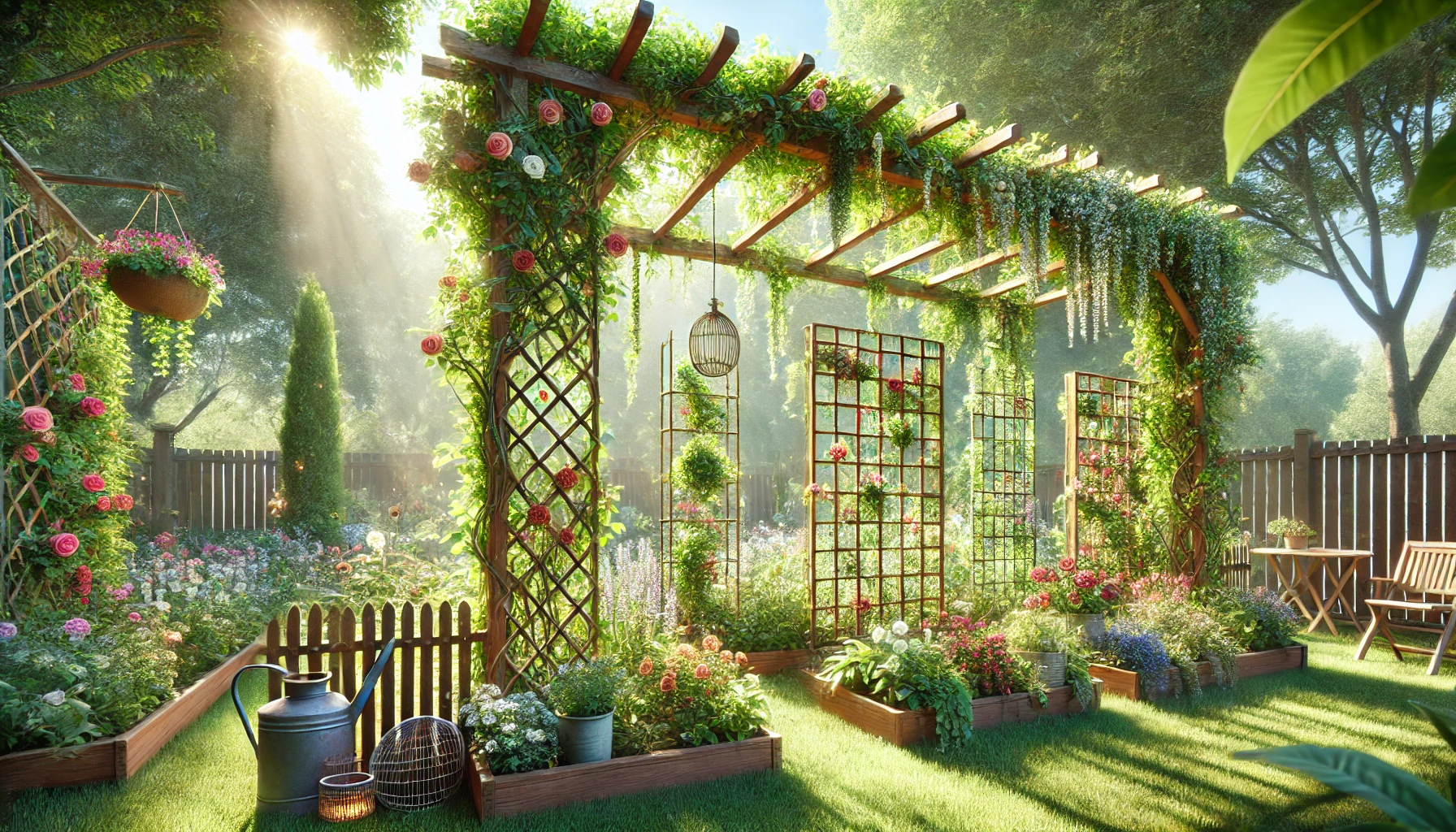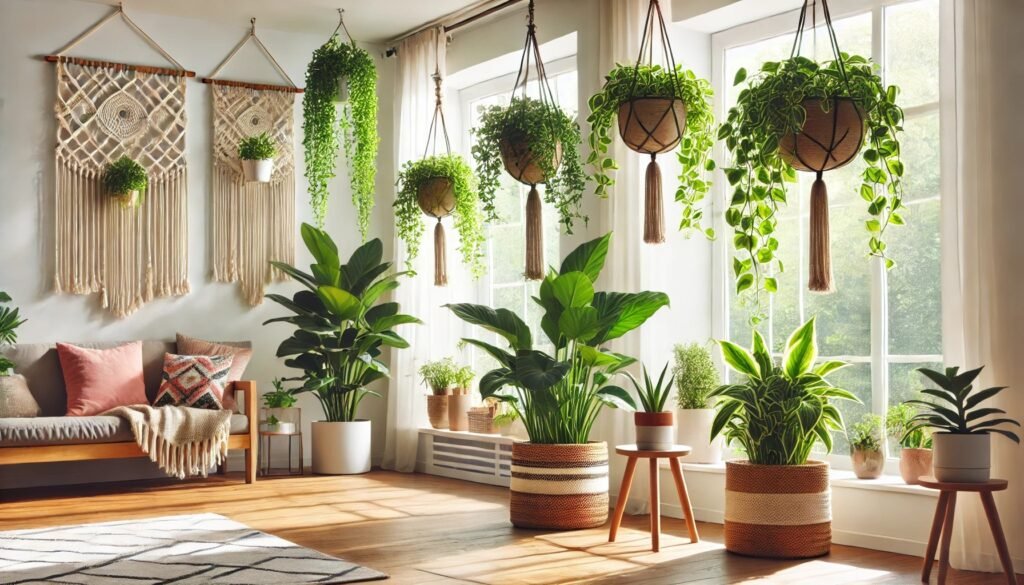
Creating your own trellises is a rewarding way to support your garden’s climbing plants while adding a touch of personal style. Whether you’re growing beans, flowering vines, or decorative climbers, a well-built trellis can improve plant health, optimize space, and beautify your garden. Let’s explore how to craft trellises using different materials and learn step-by-step methods for building simple yet decorative designs.
Choosing the Right Materials for Your Trellis
When it comes to building a trellis, the options for materials are endless. Each type has its own benefits, so choose based on the look you want and the durability you need.
Wood Trellises
Wood is a classic choice for trellises. It’s easy to work with, provides a natural appearance, and can blend seamlessly into any garden. Cedar and redwood are excellent options as they resist rot and can weather outdoor conditions well. Treated pine is more budget-friendly, but it’s important to ensure that any treatments are plant-safe.
Metal Trellises
For a more industrial look and long-lasting support, metal trellises are a great option. Iron and galvanized steel provide sturdy structures that can withstand strong winds and the weight of heavy climbers. These trellises require minimal maintenance, although a protective coating can prevent rust.
Repurposed and Upcycled Materials
Get creative and build unique trellises by using repurposed items. Old ladders, bicycle wheels, or discarded wooden pallets can be transformed into functional garden structures. Not only does this give your garden a distinctive look, but it’s also an eco-friendly way to repurpose materials that might otherwise go to waste.
Step-by-Step Guide to Building Simple Trellises
Ready to build your own trellis? Here are a few easy designs to try out, from basic to decorative.
Basic A-Frame Trellis
An A-frame trellis is perfect for supporting vegetables like beans or peas. It’s simple to make and provides excellent vertical space for climbing plants.
Materials Needed:
- Wooden stakes or poles
- Strong garden twine or rope
- Hammer and nails
Instructions:
- Place two wooden stakes in the ground at an angle to form an ‘A’ shape.
- Secure the stakes at the top by nailing them together or tying them with rope.
- Repeat this process with more stakes to create the desired length for your trellis.
- Use twine to create a crisscross pattern along the sides for plants to climb.
This design is practical and easy to move, making it ideal for different garden layouts.
Decorative Archway Trellis
An archway trellis can serve as a stunning focal point for your garden, providing a frame for flowering vines or decorative plants.
Materials Needed:
- Metal or PVC pipes
- Pipe bender (if using metal)
- Cable ties or fasteners
Instructions:
- Use the pipe bender to shape the pipes into an arch.
- Secure the base of the arch into the soil, ensuring it’s firmly in place.
- Use cable ties to add horizontal or diagonal supports for climbing plants.
This type of trellis brings elegance to your garden and can be adapted to different spaces.
Placement Tips for Trellises
Where you place your trellis matters as much as how you build it. Consider factors like sunlight, wind exposure, and plant growth patterns.
- Sunlight: Most climbing plants thrive in full sun. Position your trellis where it will receive ample light throughout the day.
- Accessibility: Ensure your trellis is easy to access for watering, pruning, and harvesting. This will make maintenance more straightforward.
- Wind Protection: Placing your trellis near a wall or fence can provide shelter from strong winds, protecting both the structure and the plants.
Best Plants for Your Trellis
Pairing the right plants with your trellis can maximize your garden’s aesthetic and productivity. Here are a few popular options:
- Climbing Roses: These add beauty and a delightful fragrance. Ensure they have sturdy support, as they can grow tall and heavy.
- Morning Glories: Known for their colorful blooms, they are perfect for decorative trellises.
- Pole Beans: Ideal for basic garden trellises. They are lightweight and easy to grow.
- Clematis: Offers a burst of color and works well on most trellis types.
How to Maintain Your Trellis
Keeping your trellis in good shape will extend its life and support healthy plant growth. Regular checks are essential for wooden structures to spot signs of rot. For metal trellises, inspect for rust and repaint as needed. Secure loose joints and ties before they become issues, especially during windy seasons.
Final Thoughts

Building your own trellises can transform your garden, providing the support climbing plants need and enhancing your garden’s appearance. Whether you choose a simple wooden A-frame or a decorative arch, the right trellis will help your plants thrive. With creativity and a bit of DIY spirit, you can craft structures that make your garden both functional and beautiful. Start with one project, and soon you’ll be ready to build even more intricate designs for your garden oasis.
Stay connected with the world of plants! Subscribe to Phylofy for expert gardening tips, DIY projects, and eco-friendly inspiration. Join our community and nurture your love for nature. Don’t miss exclusive content and updates. Subscribe now!



